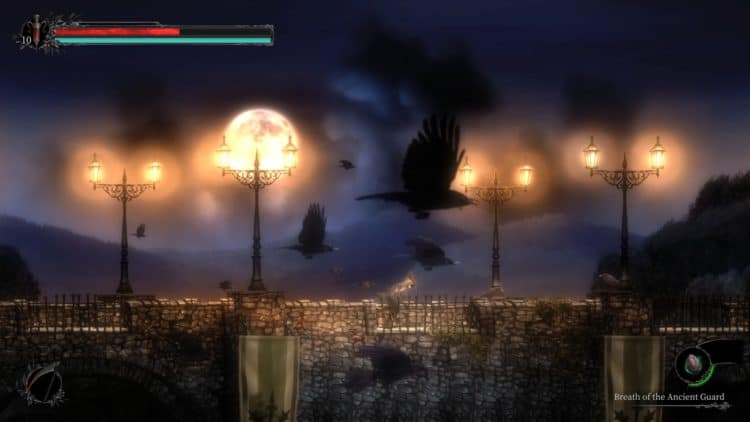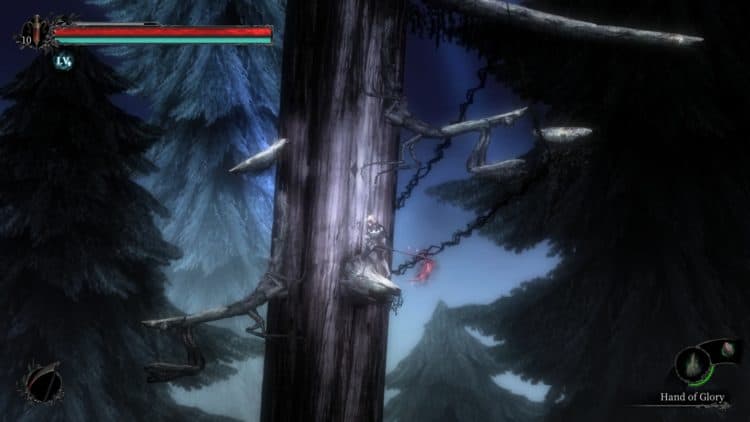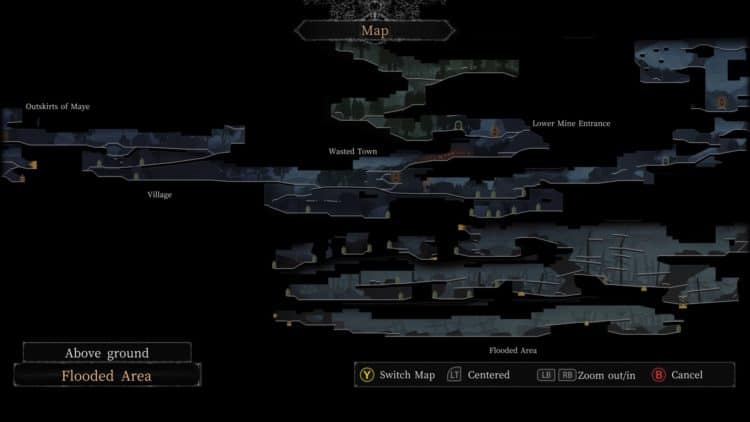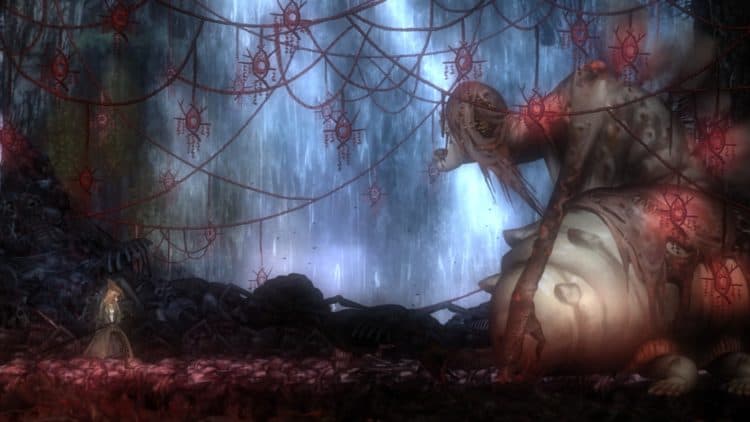
When Salt and Sanctuary released back in 2016, I considered it the perfect blend of Dark Souls‘ action and themes combined with 2D Metroidvania goodness. We won’t see a sequel from Ska Studios yet, although there’s an offering from developer Glass Heart Games and publisher Another Indie that comes close to scratching that itch. It’s none other than Vigil: The Longest Night.
Inspired heavily by Salt and Sanctuary, Vigil: The Longest Night also aims to bring that memorable hybrid of two popular subgenres.
An unbelievably cursed village
In Vigil: The Longest Night, you’ll find yourself in the shoes of Leila, the Vigilant, a warrior who’s returning to the village of Maye. Just as well, Leila happens to be looking for her sister Daisy.
Suddenly, you realize that something sinister is afoot in Maye and the nearby countryside. Shadowy figures appear and terrible incidents start occurring. You need to piece together the puzzle to uncover the mystery.
Although I did mention Vigil: The Longest Night‘s inspirations, all of those tend to have better and more engrossing stories than what this game provides. It tries to emulate the storytelling of Dark Souls – cryptic, to a fault – but it lacks the charm that would entertain you. More often than not, I found myself skipping the dialogue because the plot was so threadbare and hokey. Worse, it can be downright befuddling.

Vigil: The Longest Night‘s visuals and themes
Vigil: The Longest Night‘s strengths, though, are its themes and visual detail. Forget about the plot, at least for now, because the game world itself comes to life thanks to the striking art style and vivid sceneries.
At one point, I was mesmerized by droplets of water on my HUD as torrential rain washed over Leila. In another instance, bloody and battered corpses littered a crypt, and I felt Darkest Dungeon vibes. Later, tentacles sprouted from the ground with all the terror from a Lovecraftian horror tale. Oh, and there was even a moment when things which I thought were part of the landscape actually turned out to be mobs – poisonous wasps and stick insects that started moving once I got close enough.
There’s no denying that Vigil: The Longest Night‘s visuals are mystifying, and Glass Heart Games succeeded in this regard. If titles like the aforementioned Darkest Dungeon and Salt and Sanctuary managed to immerse you via art design alone, then Vigil: The Longest Night will likely wow you as well.

Salt and Sanctuary‘s spiritual successor
Complementing the scenery is Vigil: The Longest Night‘s emphasis on platforming. If Salt and Sanctuary focused more on the Souls-like aspect, then this game leans on what Castlevania and Metroid did effectively.
Levels are massive. You’ll spot various platforms, climbable ledges, ladders, and traps. Several stages will have you climbing and double-jumping as the soundtrack pulses throughout your run to keep you pumped. You’ll find yourself in interconnected stages in ways that would surprise you.
Additionally, there are loads of secret nooks and crannies. Many of these contain gold, upgrade materials, and other items (though there’s a lack of stuff that vendors should be selling). Still, it’s a dream for anyone who likes smashing breakable rocks, dropping down hidden cubbyholes, and sliding through narrow gaps.

Where the hell am I?
All of these are commendable, but there’s a major issue: the map is an absolute nightmare to navigate. To be fair, Salt and Sanctuary itself doesn’t have a map, but you could piece together a level’s layout most of the time. Other players even chimed in with their own fan-made creations. Conversely, in Vigil: The Longest Night, these locations often lead you to new rooms, underground pathways, and labyrinthian domains.
There are many problems with this. The first is that the map only shows overland and underground areas – it won’t show any indoor location. The second is that level boundaries are not explicitly shown. The map might make you think there’s another opening in a room, yet upon reaching it, you’ll realize that it’s just a walled-off enclosure or a dead-end.
Lastly, some sections only have your character’s icon moving inside an opaque area without regard for the actual layout. For someone who enjoyed Castlevania: Symphony of the Night (and virtually any Metroidvania that has maps you can slowly fill in as you progress), Vigil: The Longest Night‘s presentation is confusing and borderline painstaking to memorize.

Epic boss fights galore
Thankfully, the game’s enemy design and boss fights are superb. Now, both the Souls-like and Metroidvania subgenres are known for this facet already. As for Vigil: The Longest Night, it definitely doesn’t lag behind in this category. Enemy mobs, even lowly ones, will punish you if you make mistakes. Bosses, meanwhile, blast you with all sorts of spells, and you’ll need to recognize their attack patterns if you want to stay alive. You’re battling denizens such as the Brood Mother, the Mad Pale Raven, and Kelpie, Lord of Tide. In some cases, platforming also plays a role in how you approach the fight.
To help you survive, Vigil: The Longest Night offers five skill trees – four for each weapon type and one for character boosts. The weapon types are one-handed swords, heavy weapons (i.e., hammers or scythes), dual-wielded daggers, and bows. For character boosts, these are perks that increase your HP, stamina, item drop rates, and other utilities. Leveling in the game is ridiculously fast, too, and that might be because a majority of perks have multiple ranks. There’s a downside since certain skills feel redundant or unnecessary.
As for the controls, they feel relatively fluid when using a gamepad (especially with the Logitech F310 that I have). However, those who prefer a keyboard may have problems, and mouse input doesn’t even work. There are also two drawbacks regardless of your setup. The first is that diagonal movement when using stairwells can be clunky; the second is how dashing is a double tap of your sideways movement keys instead of being a separate bind.

A confusing conclusion
For all the pros and cons that Vigil: The Longest Night has, the most egregious mistake is tied to the first factor we discussed: the story. Specifically, it’s how the game’s quests and progression are structured. There are several NPCs, many of whom provide you sidequests. As you meet new people or complete certain encounters, options might open up that let you finish tasks. Then, without warning, you won’t realize that you’ve reached a “point of no return.”
This actually happened to me a couple of times. Without spoiling a lot, I defeated a boss who, apparently, changed the “setting” of sorts. This failed every sidequest I’ve yet to complete. Next, I spotted new characters and quests (some asking for specific items), but I didn’t have a clue as to where those decisions would lead to.
At one point, I thought I helped an adventurer, and the questline showed that it was completed. I continued onward and, to my shock, the outcome was the opposite of what the quest intended. Some time passed and I found myself defeating the final boss already. Then, a cinematic played and I don’t even know which ending I got out of the ones this game is touted to have.

More runs, perhaps?
To summarize, Vigil: The Longest Night is one hell of a confusing trip through an unbelievably cursed village and countryside. There are many twists and turns, and you wouldn’t even know what hit you until that moment has passed.
During a New Game+ run, I still wondered what my first playthrough accomplished given the disjointed conclusion. This is what you should be aware of if ever you’re planning on grabbing this title once it releases on October 14 via Steam.
Vigil: The Longest Night scratches the itch for a 2D Souls-like Metroidvania, or as a spiritual successor to Salt and Sanctuary — the two have “crossover content” to be discovered as well. There’s a lot of fun and enjoyment to be had here. Likewise, you’re bound to see flashes of inspiration and moments of sheer brilliance. However, its plot and campaign progression might leave you confounded even if its visuals, platforming, and battles leave you in awe.

Vigil: The Longest Night
Vigil: The Longest Night aims high and almost hits the mark thanks to its amazing level design, epic boss fights, uncanny visuals, and Lovecraftian and gothic horror themes. Sadly, it’s bogged down by its muddled story, confusing map layout, and perplexing campaign progression.





More Stories
Firefighting Simulator – The Squad review — Through the fire and the shame
Maid of Sker review — Death in the slow lane
PHOGS! review – It’s a dog-help-dog world out there